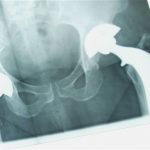
David A. Prentice, Ph.D, Senior Fellow for Life Sciences at the Family Research Council
By David A. Prentice, Ph.D
Embryonic stem cells continue to receive the majority of news coverage, yet remain the least likely stem cell to help patients. In fact, even the embryonic stem cell advocates are beginning to admit failure. The California company Geron, first to receive approval to inject embryonic stem cells into a few patients, gave up on their trial and shut down all of their embryonic stem cell research. After a year, none of the patients showed improvements, though they will need to be monitored for many years to come for potential tumor formation. Even celebrity stem cell promoter Michael J. Fox recently admitted that “[embryonic] stem cells” were unlikely to help any patients any time soon. Given that embryonic stem cells are ethically tainted, requiring the destruction of young human life or even creating a new human life via cloning (somatic cell nuclear transfer) specifically for destruction, it’s heartening that many are seeing the many problems associated with this type of stem cell.
Adult stem cells remain the only type of stem cell used successfully to treat human patients. They are the one and only gold standard for clinical treatments with stem cells. Adult stem cells have many advantages. They can be isolated from numerous tissues, including bone marrow, muscle, fat, and umbilical cord blood, just to name a few. And isolating the adult stem cells from tissues of a patient or a healthy donor does not require harming or destroying the donor, giving adult stem cells a decided ethical advantage over embryonic stem cells. Adult stem cells also have a proven track record for success at saving lives and improving health on a daily basis. Over 50,000 people around the globe are treated each year with adult stem cells. The diseases and conditions successfully treated by adult stem cells, as shown by published scientific evidence, continue to expand, with published success for numerous cancers, spinal cord injury, heart damage, multiple sclerosis, sickle cell anemia, and many others.
Here are a few samples of adult stem cell advances in the last year.
* Heart damage. Adult stem cells continue to pile up the evidence for their success at improving the health of damaged hearts. Repair of damaged heart muscle in patients has been documented both for new heart attack damage as well as for patients with chronic heart failure. Doctors at Cedars-Sinai Hospital in Los Angeles used adult stem cells from the hearts of the patients themselves, grown in the lab and then injected back into the patients’ own hearts. They found that the adult stem cells could re-grow damaged heart muscle and reduce scars in the heart tissue. Meanwhile Yale scientists used a young girl’s own bone marrow adult stem cells to grow heart tissue and blood vessels to repair the girl’s congenital heart problem. And doctors from the Texas Heart Institute in Houston presented evidence that adult stem cells from a patient’s own bone marrow could repair damaged areas of hearts suffering from severe heart failure, allowing the heart to increase its pumping capacity to deliver oxygenated blood t the body. If you think that using adult stem cells to treat heart damage is a new fad or unproven in the medical literature, you need to understand that it’s not. Prof. Dr. med. Bodo-Eckehard Strauer of Germany recently published a review of his own and other’s clinical trials, starting with his first adult stem cell transplant for a heart patient back in 2001.
* Muscle repair. Scientists at the University of Pittsburgh School of Medicine have shown that adult stem cells from the muscle of young mice can improve the health and extend the life of aged mice. While this doesn’t mean that the cells are truly the fountain of youth, it highlights the possibility of using adult stem cells for muscle repair, as well as the ability eventually to isolate “rejuvenating factors” from adult stem cells in muscle or other tissues.
* New windpipes. Italian Dr. Paolo Macchiarini, who is a Visiting Professor at the Karolinska Institute in Stockholm, Sweden, continues to improve on his procedure to grow new windpipes for patients. Dr. Macchiarini has grown new trachea for at least eight patients, using the patient’s own adult stem cells from bone marrow to grow functional windpipes in patients with cancer or other tracheal problems. His most recent advance this year was using a synthetic substrate on which the adult stem cells are seeded, allowing them to grow and take the shape of a normal windpipe.
* Grow your own transfusion. French scientists showed for the first time that a few adult stem cells from a patient could be used to grow enough red blood cells in the lab for a transfusion. The adult stem cells efficiently produced new cells that survived transfusion back into the patient’s body and functioned normally.
If you’d like to see a few more samples of the tremendous success of adult stem cells, see the videos at http://www.stemcellresearchfacts.org
Dr. Prentice is Senior Fellow for Life Sciences at the Family Research Council.







